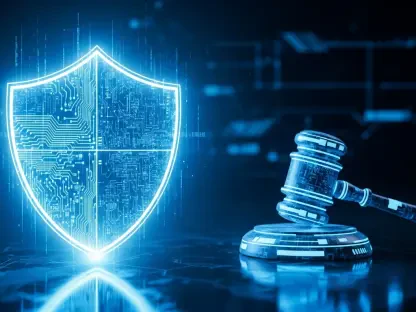Introduction
Imagine a tech landscape where a single lawsuit over a patent can wipe out billions in market capitalization, or where a star researcher’s departure sparks a legal firestorm that reshapes an entire company’s future. This is the reality of the artificial intelligence (AI) sector in 2025, where intellectual property (IP) disputes and fierce competition for talent are not just challenges but pivotal forces driving the valuation of tech giants and startups alike. The stakes have never been higher as companies grapple with legal battles and talent poaching, directly impacting investor confidence and market positioning.
The purpose of this FAQ article is to address the most pressing questions surrounding these dynamics, offering clarity on how IP conflicts and talent wars influence financial outcomes in the AI industry. Readers can expect to explore key issues, uncover actionable insights, and understand the broader implications of these trends. From legal risks to strategic talent retention, this piece aims to provide a comprehensive guide to navigating the complex intersection of law, human capital, and tech valuations.
This content will delve into specific challenges, supported by real-world examples and data, to illustrate the tangible effects on the industry. By breaking down the critical factors at play, the article seeks to equip stakeholders with the knowledge needed to anticipate risks and seize opportunities in this rapidly evolving field. Whether you’re an investor, a tech leader, or simply curious about AI’s economic landscape, these answers will shed light on a transformative era.
Key Questions
What Are the Financial Impacts of AI IP Disputes on Tech Valuations?
Intellectual property disputes have emerged as a significant threat to the financial stability of AI companies, often resulting in massive losses in market capitalization. These legal battles, involving patents, trademarks, and trade secrets, can drain resources and erode investor trust, creating volatility in stock prices. The industry has seen staggering figures, with market cap losses totaling $403 billion in recent years due to such conflicts, underscoring the high financial stakes involved.
A prominent example is the trademark dispute between Xai and xAI, which triggered a 56% spike in market cap losses due to brand confusion and mandatory legal disclosures. Such cases highlight how unresolved IP issues can directly undermine a company’s perceived value. Beyond immediate financial hits, these disputes often lead to long-term reputational damage, further complicating recovery efforts for affected firms.
Moreover, the uncertainty around the copyright status of AI-generated content poses an existential risk to certain business models. Companies heavily reliant on creative outputs, like Midjourney, face potential devaluation, while those with robust IP portfolios, such as Anthropic, may gain a competitive edge. This disparity shows how legal clarity—or the lack thereof—can significantly sway investor perceptions and financial standings in the sector.
How Do Talent Wars Affect AI Companies’ Competitive Edge and Risks?
The competition for top AI talent has reached unprecedented levels, with leading researchers commanding compensation packages as high as $300 million over four-year contracts. This intense demand reflects the critical role that expertise plays in driving innovation and maintaining a competitive advantage. However, the high mobility of talent also introduces substantial risks, often sparking IP litigation when key personnel move between rival firms.
A notable case is the lawsuit between Apple and Oppo, centered on stolen wearable tech secrets after an engineer’s departure. Such incidents reveal how talent transitions can lead to costly legal entanglements, further threatening a company’s stability. The dual nature of talent as both an asset and a vulnerability necessitates strategic approaches to retention that go beyond financial incentives alone.
Companies like Anthropic have demonstrated success by focusing on non-monetary factors, such as offering research autonomy and fostering a mission-driven culture. This approach contrasts with failed attempts, like Meta’s $1 billion offer to a top researcher, which did not secure loyalty. Balancing monetary and intrinsic motivators appears essential for minimizing risks while maximizing the benefits of a skilled workforce in this high-stakes environment.
Why Is IP Strategy Becoming a Core Component of Tech Valuations?
In the AI sector, intellectual property has evolved from a mere legal concern into a strategic tool that directly influences how companies are valued by investors. Robust IP protections and transparent governance often result in valuation premiums, while firms entangled in legal disputes face discounts ranging from 20% to 30%. This shift reflects a growing recognition of IP as a measurable indicator of long-term financial health.
Advanced AI tools are now being utilized to automate IP valuation, assessing legal risks and predicting litigation outcomes with greater precision. These innovations provide investors with quantifiable metrics, enabling more informed decisions about a company’s worth. Firms with strong defensive IP portfolios, such as Google, create competitive moats that deter rivals and enhance market confidence in their stability.
Long-term data further supports the importance of IP strategy, showing that patent intensity in AI and machine learning correlates with higher returns on assets and improved operating margins. However, short-term volatility caused by ongoing lawsuits can offset these gains, creating a complex dynamic. Navigating this landscape requires a proactive focus on building and protecting IP assets to ensure sustained investor appeal.
What Broader Trends Are Shaping the AI Sector Amid Legal and Talent Challenges?
A defining trend in the AI industry is the transformation of IP and talent from static assets into dynamic, strategic levers that shape competitive outcomes. Legal battles and talent wars are no longer peripheral issues but central components of risk models used by investors to evaluate potential returns. This shift demands that companies adapt to a landscape where every legal precedent or personnel change can redefine market positions.
Another emerging pattern is the increasing quantification of IP-related risks within valuation frameworks. Investors are adjusting their strategies to account for legal volatility and talent retention challenges, rewarding firms that demonstrate resilience in these areas. The ability to navigate unresolved issues, such as the copyrightability of AI-generated content, could determine the fate of entire subsectors in the coming years.
Consensus among industry observers suggests that future success will hinge on balancing legal scrutiny with innovative talent management. Companies must build defensive IP portfolios while crafting retention frameworks that prioritize ethical alignment and autonomy over purely financial rewards. This holistic approach is seen as critical for mitigating risks and positioning firms for growth in an increasingly competitive arena.
Summary
The key points discussed in this FAQ article highlight the profound impact of IP disputes and talent wars on tech valuations within the AI sector. Financial losses from legal battles, exemplified by market cap declines of $403 billion, underscore the urgent need for strong IP protections. Simultaneously, the talent war reveals a dual-edged sword, where high compensation and mobility drive innovation but also ignite litigation risks, as seen in cases like Apple versus Oppo.
Significant takeaways include the evolving role of IP as a strategic valuation driver, with premiums for robust portfolios and penalties for legal entanglements. Talent retention strategies that emphasize non-monetary incentives, such as those adopted by Anthropic, emerge as vital for maintaining a competitive edge. Additionally, broader trends point to the integration of legal and human capital risks into investor models, shaping how companies are perceived in the market.
For readers seeking deeper exploration, consider reviewing industry reports on IP litigation trends or studies on talent retention in high-tech sectors. Engaging with resources from legal and HR perspectives can provide further insights into managing these challenges. Staying informed about emerging precedents and strategies will be crucial for anyone invested in the AI landscape.
Final Thoughts
Reflecting on the discussions held, it becomes evident that the AI industry has reached a critical juncture where IP battles and talent wars define not just challenges but also opportunities for strategic differentiation. The immense financial toll of legal disputes and the complexities of talent mobility have reshaped how value is perceived and calculated in this space. Companies that have prioritized defensive IP strategies and innovative retention frameworks often emerge stronger, while others struggle under the weight of litigation and attrition.
Looking ahead, actionable steps emerge as vital for navigating this terrain. Firms are encouraged to invest in comprehensive IP audits to identify vulnerabilities and strengthen protections before conflicts arise. Simultaneously, fostering cultures that value autonomy and purpose over mere financial gain has proven effective in securing top talent, reducing the risk of costly departures. These measures, combined with transparent governance, offer a pathway to mitigate risks and build investor trust.
As a closing consideration, stakeholders are urged to assess how these dynamics apply to their specific contexts, whether in investment decisions or corporate strategy. Have the right balance between legal preparedness and talent investment been struck? Exploring this question could unlock new avenues for resilience and growth in an era where every decision carries amplified consequences.









